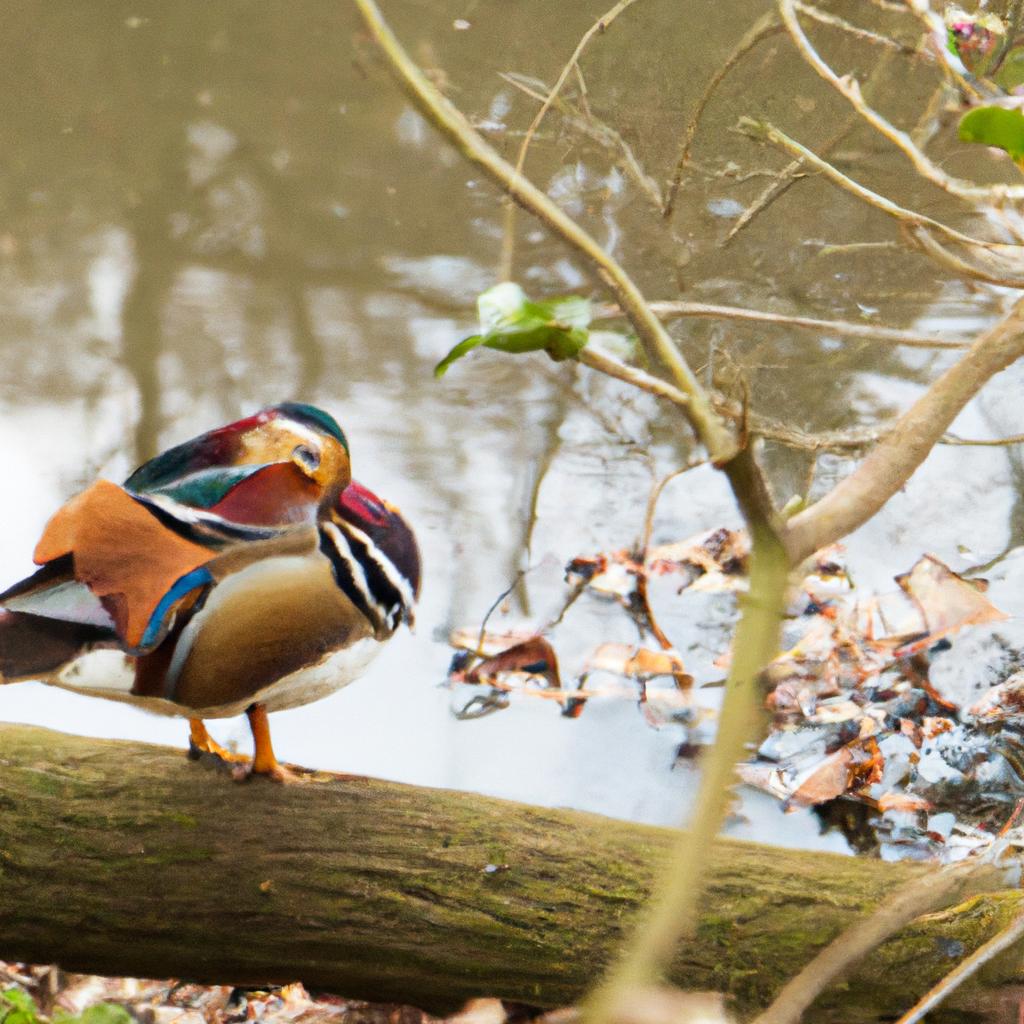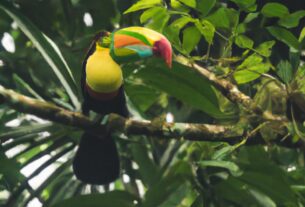Mandarin Ducks, with their mesmerizing multicolored plumage and distinctive appearance, have become a beloved symbol of natural beauty. These captivating waterbirds, native to East Asia, can predominantly be found in China, Japan, Korea, and Russia. Bird enthusiasts often spot Mandarin Ducks gracefully swimming in ornamental ponds and waterways, fascinated by their charm.
Belonging to the Anatidae family, which includes geese and swans, Mandarin Ducks are scientifically known as Aix galericulata. Their feathers showcase a dazzling blend of orange, green, yellow, white, and purple hues. The vibrant colors are more vivid in males, while females exhibit more muted plumage.
Compact in size, Mandarin Ducks measure an average length of 41-49 cm, with a wingspan ranging from 65-75 cm. Males weigh between 700-820 g, slightly larger than the females, which weigh between 500-700 g.
When admiring Mandarin Ducks, it’s easy to distinguish between males and females. The male boasts an orange and reddish-brown head with a white crescent above the eye, a purple breast embellished with two vertical white stripes, and a striking greenish-blue crest at the back of its head. The rest of its body is adorned with brownish-orange, black, and white feathers.
In contrast, the female Mandarin Duck showcases a brownish-orange head with a white eye-ring, a grayish-brown body, and a white stripe above the eye. Their plumage is more subdued compared to the males, which enables them to blend into their surroundings and protect themselves from potential predators.
Mandarin Ducks possess a captivating allure that has won the hearts of bird enthusiasts and collectors alike. However, it is crucial to remember that these birds are wild creatures and should not be kept as pets.
Habitat and Range of Mandarin Ducks
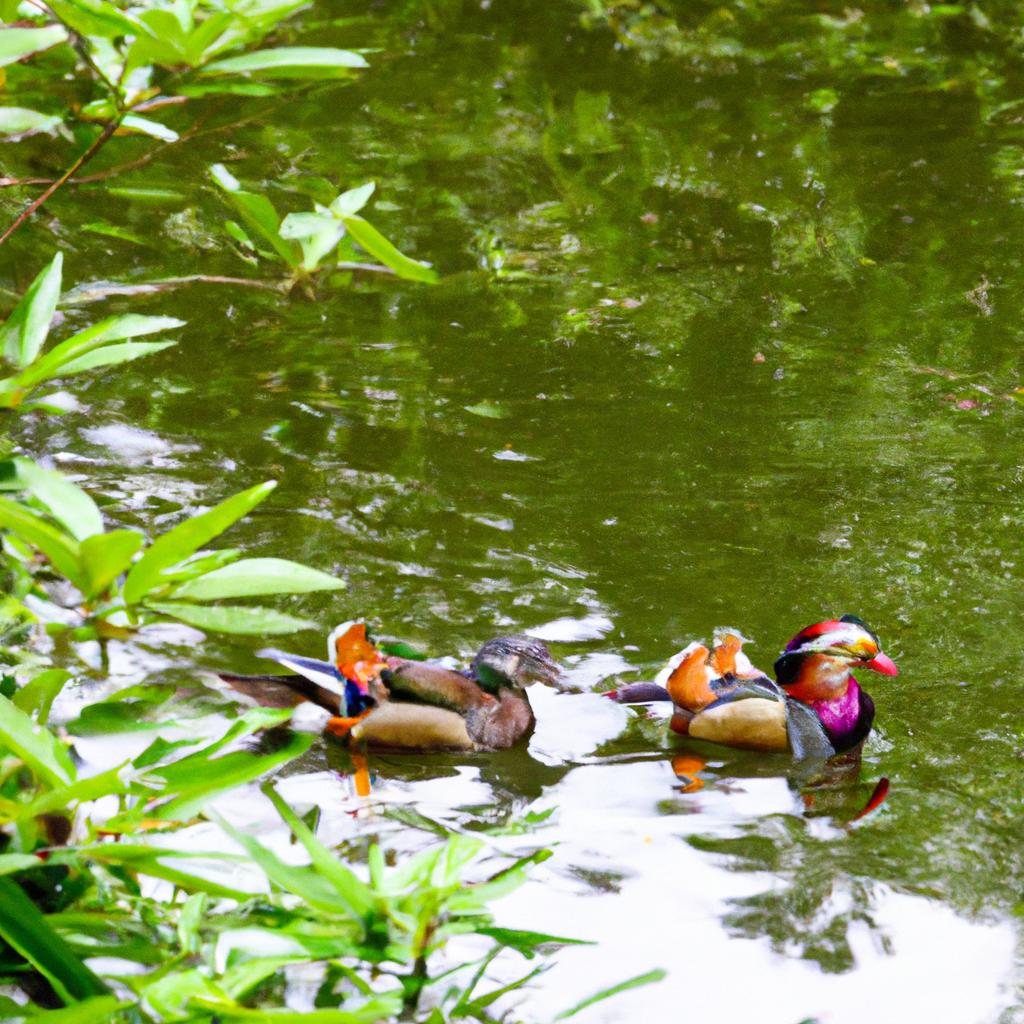
Mandarin Ducks thrive in wooded areas near rivers, streams, and ponds throughout East Asia. Their natural habitat encompasses temperate and subtropical forests, marshes, and wetlands. They prefer areas rich in vegetation and water, which provide an abundant food supply and shelter.
Native to China, Japan, Korea, and Russia, Mandarin Ducks have also been introduced to other parts of the world, such as the UK, Europe, and North America. These introduced populations can often be found in parks, gardens, and zoos, where they are cherished for their captivating beauty.
Behavior and Diet of Mandarin Ducks
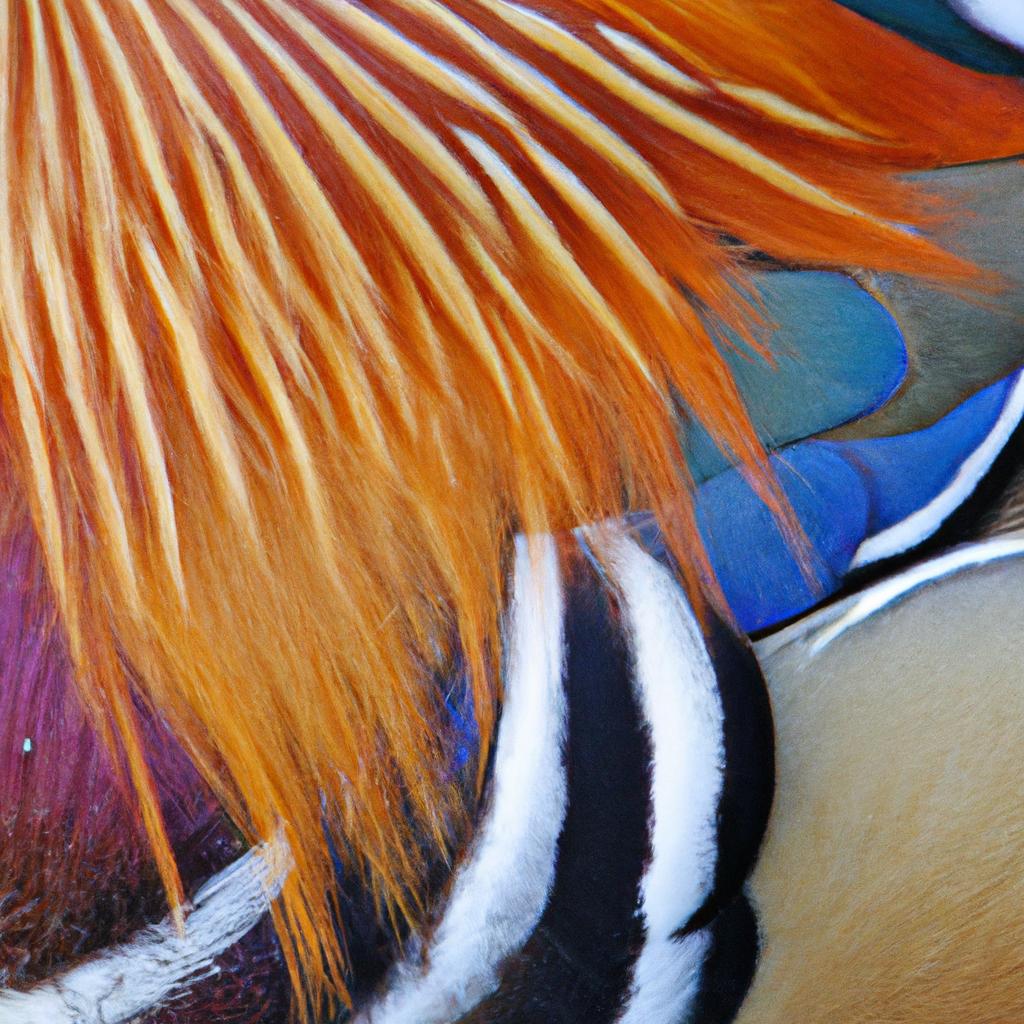
Mandarin Ducks are sociable birds, frequently spotted in pairs or small groups. During the breeding season, males engage in elaborate courtship displays, stretching their necks, shaking their heads, and emitting soft calls to attract females.
As omnivorous creatures, Mandarin Ducks have a diverse diet consisting of aquatic plants, seeds, fruits, insects, snails, and small fish. They are known to dive underwater skillfully in search of food.
When it’s time to breed, Mandarin Ducks construct nests in tree cavities close to water. The female lays between 9-12 eggs, incubating them for around 30 days. Once the eggs hatch, both parents actively care for their young ducklings, teaching them essential survival skills like swimming and foraging.
In summary, Mandarin Ducks are enthralling waterbirds with a remarkable and vibrant appearance. They inhabit various natural habitats across East Asia and contribute to their ecosystems through their social behavior and omnivorous diet. The admiration for these birds among bird enthusiasts has led to their introduction in other regions of the world.
Conservation Status of the Mandarin Duck

The Mandarin Duck’s conservation status is classified as “Least Concern” by the International Union for Conservation of Nature (IUCN). However, their population faces various threats, including habitat loss, hunting, and competition for resources with invasive species. Non-native fish species introduced in certain regions consume the same insects and aquatic creatures that Mandarin Ducks rely on, leading to their decline in numbers.
To protect Mandarin Duck populations, conservation efforts have been implemented. Governments in China, Japan, and Korea have designated protected areas for these birds, strictly prohibiting hunting. Additionally, habitat restoration initiatives are underway to improve the wetland and river ecosystems that provide a home to these magnificent birds.
Cultural Significance of the Mandarin Duck
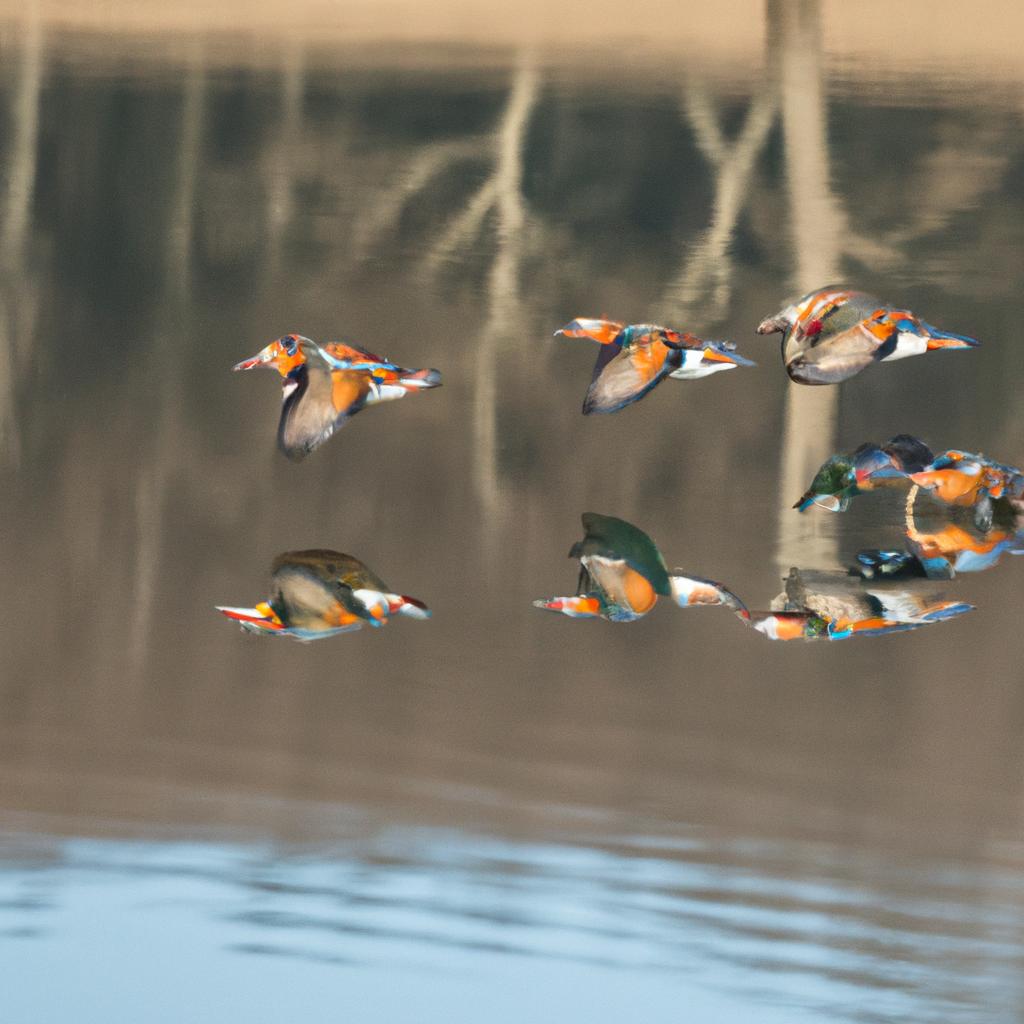
Mandarin Ducks hold a revered place in various cultures. In China, they symbolize love and fidelity, often depicted in art and literature as a symbol of marital harmony. In Japan, these birds are considered bearers of good luck and happiness, frequently showcased in traditional paintings and textiles.
In Western cultures, Mandarin Ducks grace ornamental ponds and waterways, admired for their captivating beauty. These stunning creatures have even found mention in literature, including the works of Shakespeare.
In conclusion, the Mandarin Duck stands as a remarkable and stunning bird with a rich cultural heritage. As we strive to safeguard their habitats, we can continue cherishing their unique beauty and value in our world. At TooLacks, we celebrate the wonders of nature and encourage everyone to take action in preserving our environment for future generations.
Discover more about the wonders of nature and explore our commitment to the environment at TooLacks.
